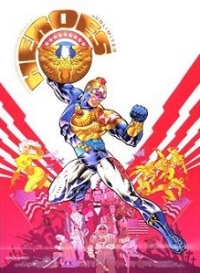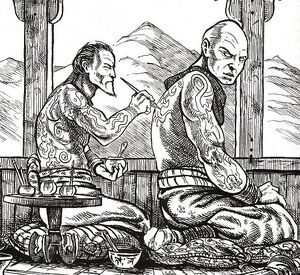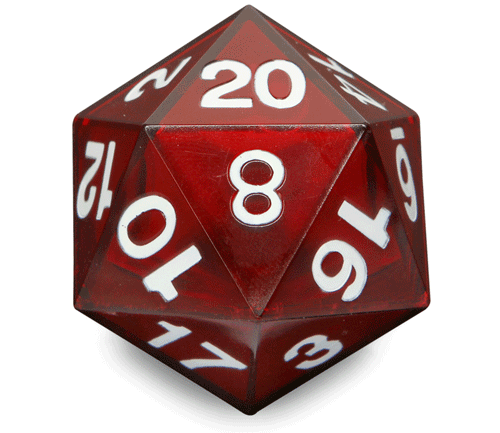I was looking over a few notes I did for converting d20 modern to Castles and Crusades. Or more accurately I was thinking about using the siege engine for a modern game. Now with Amazing Adventures in my hand it renewed my interest in this idea.
So here is my take on the Modern classes in AA fashion.
First up the
Strong Hero.
Prime: Strength.
HD: D8
Action points: 5
Level Bth Def
1 +1 +1
2 +2 +2
3 +3 +2
4 +4 +3
5 +5 +3
6 +6 +3
7 +7 +4
8 +8 +4
9 +9 +5
10 +10 +5
Extreme Effort: A strong hero can take a full round action any time test of strength is needed for a +2 bonus. +3 at level 4. And +4 at level 8+.
Melee Smash: A strong hero gets a +1 to all melee weapon damage. +2 at level 5. And +3 at level 6+.
Ignore hardness: A strong hero can find weakness in objects. Dealing an extra d4 damage to inanimate objects. D6 at level 6+.
Next up the
Fast Hero.
Prime: Dexterity.
HD: D8
Action points: 5
Level Bth Def
1 +0 +3
2 +1 +4
3 +2 +4
4 +3 +5
5 +3 +5
6 +4 +6
7 +5 +6
8 +6 +7
9 +6 +7
10 +7 +8
Evasion: Any time the fast hero makes a defensive roll to take 1/2 damage the fast hero instead takes no damage. +1 bonus to defensive rolls at level 4. +2 at level 6. And +3 at level 9+.
Increased speed: A fast hero adds 5 to his base movement.
Quick reflexes: A fast hero get a +1 bonus to all initiative rolls. +2 at level 5. And +3 at level 8+.
Next up the
Tough Hero.
Prime: Constitution.
HD: D10.
Action points: 5
Level Bth Def
1 +0 +1
2 +1 +2
3 +2 +2
4 +3 +3
5 +3 +3
6 +4 +3
7 +5 +4
8 +6 +4
9 +6 +5
10 +7 +5
Damage Reduction: A Tough hero can shrug off damage that would wound a lesser hero. Tough Heroes ignore 1 point of damage from all melee and ranged attacks. 2 points at 4. 3 points at 8+.
Remain conscious: A Tough hero adds +4 to all rolls to stay conscious or to resist being knocked out.
Robust: Tough heroes add +1 to all hit die rolls for adding hit points. Max is still 10+con mod.
Second wind: Once per day a Tough hero can roll and add a hit die to his hit points. This ability can only be used in combat, And only used if the character is below 1/2 his starting hit points.
Next up the
Smart Hero.
Prime: Intelligence.
HD: D6
Action points: 5
Level Bth Def
1 +0 +0
2 +1 +1
3 +1 +1
4 +2 +1
5 +2 +2
6 +3 +2
7 +3 +2
8 +4 +3
9 +4 +3
10 +5 +3
Exploit Weakness: After the first round of combat the Smart hero can make an intelligence roll to notice an enemies weakness. If successful the Smart hero can use Int adj to attack for the rest of the combat.
Savant: After spending a full round watching some one perform a skill the Smart hero can make an Int roll, if successful the smart hero can add +2 to use the same skill.
Plan: Before entering combat or a dramatic situation the smart hero can make a plan. The smart hero makes an intelligence roll. If successful all allies get a circumstance bonus equal to the Smart heroes Int Adj. For a number of rounds equal to the Smart Heroes level.
Next up the
Dedicated Hero.
Prime: Wisdom.
HD: D6
Action points: 5
Level Bth Def
1 +0 +0
2 +1 +1
3 +1 +1
4 +2 +1
5 +2 +2
6 +3 +2
7 +3 +2
8 +4 +3
9 +4 +3
10 +5 +3
Empathy: After having a full round to observe a target and possibly talk to the target the Dedicated Hero can made an empathy roll (wis), if successful add his Wisdom Adj to all attempts to bluff, persuade, Intimidate and sense motive in the place of Charisma adj.
Intuition:
There are times when things just don't "feel right". The Dedicated hero has an innate ability to sense trouble. At any time a Dedicated Hero can make a Intuition roll. On a successful roll the Dedicated hero will know "all is ok" or "thinks are just not right".
Healing Knack: Dedicated heroes have a knack for caring for others. And gains a bonus to fist aid and healing rolls. +1 bonus. +2 at level 5. And +3 at level 8+.
Aware: Dedicated Heroes get a bonus to all rolls to Spot or Notice. +1 bonus. +2 at level 4. And +3 at level 8+.
Next up the
Charismatic Hero.
Prime: Charisma.
HD: D6
Action points: 5
Level Bth Def
1 +0 +0
2 +1 +1
3 +1 +1
4 +2 +1
5 +2 +2
6 +3 +2
7 +3 +2
8 +4 +3
9 +4 +3
10 +5 +3
Charm:
Charismatic heroes have something about them that make others like them. Charismatic heroes get a bonus to all forms of social interaction. +1 bonus. +2 at level 5+.
Fast Talk:
Any time the Charismatic hero makes a bluff or diplomacy roll he adds a bonus. +1, +2 at level 3, and a +3 at level 6+.
Taunt: The charismatic hero can fluster an enemy with a successful charisma roll. The target gets a penalty to his next action equal to the heroes charisma adj. (So a +2 becomes a -2 penalty.)
Can only be used once per target per combat or dramatic scene.
Inspire: The Charismatic hero can bolster the confidence of an ally with a successful charisma roll. The target gets a bonus to his next action equal to the heroes charisma adj.
Can only be used once per target per combat or dramatic scene.
Greater Inspiration: The Charismatic hero can bolster the confidence of the party with a successful
charisma roll. The entire party (other than himself) get a inspiration bonus +1 to all actions for a number of rounds equal to the Heores level. Can only be used once per combat or dramatic scene.


.jpg)






























